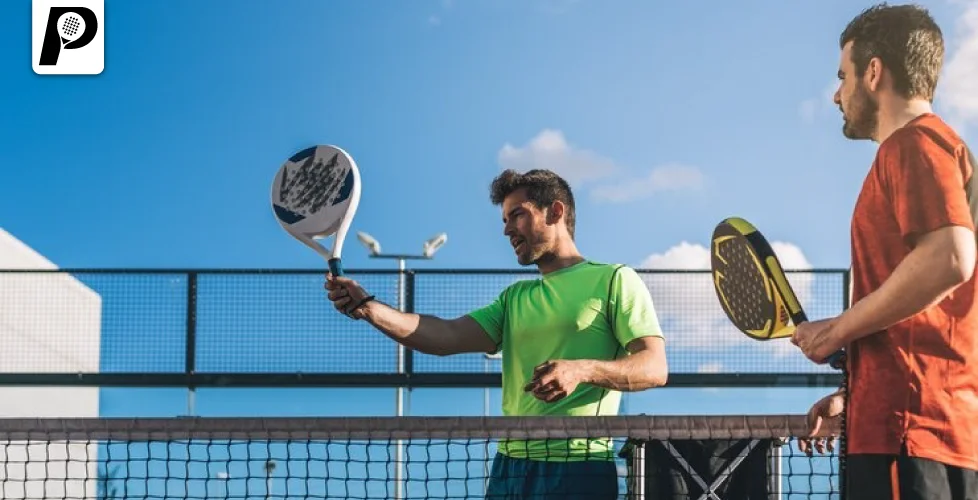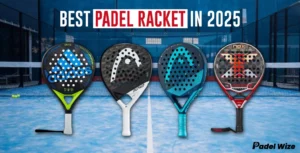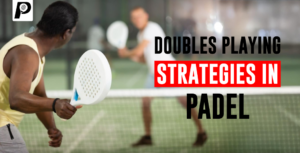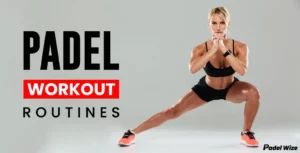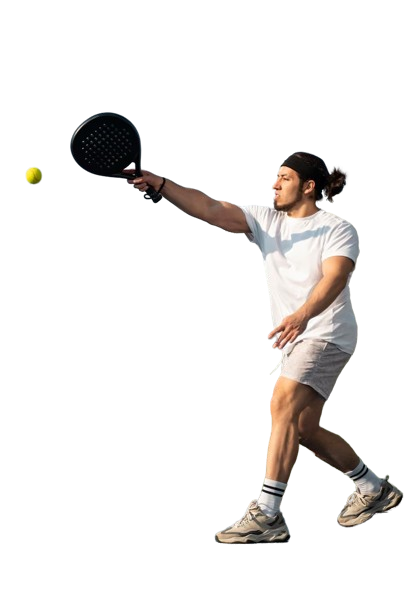In recent years, a new sport has rapidly gained popularity worldwide: Padel. While it may still be relatively unknown in some countries, it’s quickly becoming a favorite among racket sports enthusiasts. Combining elements of tennis, squash, and badminton, Padel Trend in Racket Sports offers an exciting, fast-paced game that’s easy to pick up, but with enough strategy and skill to challenge even experienced players.
The systematic review on “Performance Analysis in Padel” highlights key factors influencing player performance, including physical fitness, technical skills, and tactical strategies. It emphasizes the need for further research on data-driven approaches to enhance training and match outcomes.
In this blog, we’ll explore what Padel is, why it’s becoming so popular, and how it’s becoming a trendsetter in the world of racket sports.
Read more: Mastering the Game at Your Padel Club: Tips and Techniques
What is Padel?
Padel, sometimes referred to as padel tennis, is a racket sport that is typically played in doubles on an enclosed court slightly smaller than a tennis court. The sport combines elements from tennis and squash, but with a unique set of rules and gameplay that sets it apart. Originating in Mexico in the 1960s, Padel Trend in Racket Sports it has since spread throughout Spain, Argentina, and increasingly to other parts of Europe and the world.
The game is played with solid, stringless rackets and a low-compression tennis ball. The court is surrounded by walls, and players are allowed to use them, similar to squash, making the sport highly dynamic and strategic.
Read more: What is Padel? Exploring the Equipment, Rules, and Strategies
Padel Court and Equipment
Padel’s unique court design and specialized equipment distinguish it from other racket sports. The enclosed court and solid, stringless rackets offer an engaging and strategic gameplay experience, making it accessible and challenging for players of all skill levels.
- The Court: A Padel court measures 20 meters by 10 meters and is enclosed by glass and wire mesh walls. Unlike a traditional tennis court, these walls are an integral part of the game, allowing players to bounce the ball off them in creative and tactical ways.
- The Racket: Padel rackets are smaller and without strings, typically made of composite materials like carbon fiber or fiberglass.
- The Ball: A Padel ball is similar to a tennis ball but with slightly less pressure, which slows the game down just enough to add to the strategic element.
Read more: Padel Smash Game: Essential Equipment and Gear Guide
How is Padel Played?
Padel Trend in Racket Sports is almost always played in doubles, though singles can be played on a narrower court. The rules are relatively simple and are a mix between tennis and squash:
- Scoring: Padel uses the same scoring system as tennis (15-30-40-game), and players usually compete in matches that are the best of three sets.
- Serve: The serve must be underhand and hit diagonally into the opponent’s service box, similar to tennis.
- Ball in Play: Once the ball is served, it can be volleyed or allowed to bounce once before being returned. Players can use the walls to their advantage, either defensively or to execute tricky shots.
- Using the Walls: One of the unique aspects of Padel is the ability to bounce the ball off the glass walls, adding a layer of complexity and strategy to the game. This wall play introduces a whole new set of tactics, requiring anticipation and precise positioning.
- Rallying: The rally continues until one team fails to return the ball properly. Points are awarded based on the standard tennis format.
Read more: Padel Rules and Regulations: How to Play Like a Pro
Why is Padel Growing So Fast?
Padel Trend in Racket Sports is experiencing an explosive growth worldwide, attracting players of all ages and skill levels. It’s easy-to-learn nature, combined with a social and fun gameplay experience, has made it one of the fastest-growing racket sports globally.
- Accessibility: One of the biggest reasons for Padel’s surge in popularity is how easy it is to learn. Unlike tennis, which can require years of practice to master, Padel has a gentle learning curve. Beginners can start playing and enjoying the game within a few sessions, making it appealing to a broader audience.
- Social Aspect: Padel is predominantly a doubles game, meaning it’s inherently social. Whether playing with friends or competing in a casual league, the camaraderie and teamwork required in Padel make it a highly enjoyable group activity.
- Fun for All Ages: Padel is a sport that caters to people of all ages and fitness levels. The court is smaller than a tennis court, and the game relies more on strategy than physical strength or speed, making it an inclusive sport that both children and older adults can enjoy.
- Growing Infrastructure: With the growing demand for Padel, new courts and clubs are popping up around the world. Countries like Spain and Argentina have been leading the way for years, but now the sport is gaining ground in the UK, Sweden, France, and even parts of the US. Many tennis clubs are converting underutilized spaces into Padel courts to meet this rising demand.
- Celebrity Endorsements: Padel has captured the attention of several high-profile athletes and celebrities, further driving its appeal. From footballers like David Beckham and Zlatan Ibrahimović to tennis stars like Rafael Nadal, many have become passionate advocates for the sport. This visibility has boosted Padel’s profile and contributed to its rapid global expansion.
Read more: What is Padel Sport? Key Facts and Tips for New Players
How Does Padel Compare to Other Racket Sports?
While Padel shares similarities with tennis and squash, its unique features make it stand out:
- Smaller Court: The smaller court size in Padel leads to longer rallies compared to tennis, making the game more engaging and exciting for both players and spectators.
- Wall Play: Like squash, Padel incorporates wall play, which adds an extra layer of strategy. Players need to be able to predict how the ball will bounce off the glass walls and use them to their advantage.
- Easier to Master: While tennis can take years to become proficient, Padel’s easier rules and less demanding physical requirements make it more accessible to beginners.
Read more: Padel vs Tennis: Which Racket Sport Is Right for You?
The Future of Padel
As Padel Trend in Racket Sports grows, it’s set to become a dominant racket sport. Spain leads with thousands of courts and clubs, and the trend is spreading across Europe, the Middle East, and the Americas. International tournaments, federations, and rankings are all contributing to Padel’s development as a serious competitive sport.
The accessibility of social aspects of Padel are likely to fuel its growth even further. Here are a few trends that suggest a bright future for the sport:
1. International Expansion
As Padel spreads globally, local federations promote it by hosting tournaments, building courts, and encouraging participation. The World Padel Tour has boosted its popularity, with countries like the US, UK, and Sweden seeing a rapid rise in Padel clubs and facilities.
2. Inclusion in Multi-Sport Events
Support is growing to include Padel in major events like the Olympics and Pan American Games. Although not yet an Olympic sport, its rising popularity suggests it could soon be a contender, further boosting its visibility and player participation.
3. Increased Sponsorship and Media Attention
As Padel gains more attention, sponsorship deals from major brands and media coverage are increasing. This trend is leading to better facilities, higher-quality tournaments, and more prize money for professional players. The involvement of well-known athletes and celebrities, combined with the rise of social media, has also contributed to the sport’s viral growth.
4. Technological Innovations
Just like in other sports, technology is playing a significant role in the development of Padel. Innovations like high-performance rackets, improved courts, and better playing surfaces are enhancing the Padel experience. Apps for tracking progress, booking courts, and joining leagues are also making the sport more accessible.
5. Community Building
Padel is more than just a sport; it’s becoming a community-driven activity. Padel clubs are forming worldwide, providing a space for people to socialize, exercise, and compete. These clubs often host social events, tournaments, and training sessions, fostering a sense of community that keeps players engaged. This sense of belonging is a significant reason why people who start playing Padel often become lifelong fans.
Read more: How to Improve Your Game with the Right Padel Racquet
How to Get Started with Padel
If you’re intrigued by Padel and want to give it a try, here’s how to get started:
- Find a Padel Court: Check local sports clubs or dedicated Padel facilities. As the sport grows, more courts are becoming available in public parks and recreation centers.
- Get the Right Equipment: You don’t need much to start playing Padel. A Padel racket, a few balls, and some comfortable sportswear are all that’s required. Many clubs also offer rental equipment for beginners.
- Learn the Rules: While Padel is easy to pick up, it’s helpful to familiarize yourself with the basic rules before you play. Many clubs offer introductory lessons for beginner sessions where you can learn the ropes with other new players.
- Start Playing: Once you’ve learned the basics, gather a group of friends and hit the court. Padel is a social sport, so don’t be afraid to invite others to join in the fun. You’ll quickly see why this game is taking the world by storm!
Read more: A Beginner’s Guide to Following the Pro Padel League
Conclusion
Padel is more than just a sport; it’s a growing global phenomenon that combines fun, strategy, and fitness in one dynamic package. Whether you’re looking to try something new, stay active, or socialize with friends, Padel offers something for everyone. Its rapid rise as a favorite racket sport shows no signs of slowing down, and it’s only a matter of time before it becomes a household name across the globe.
So, what is Padel? It’s the next big thing in racket sports, and it’s here to stay. Why not join the movement and give it a try today?

